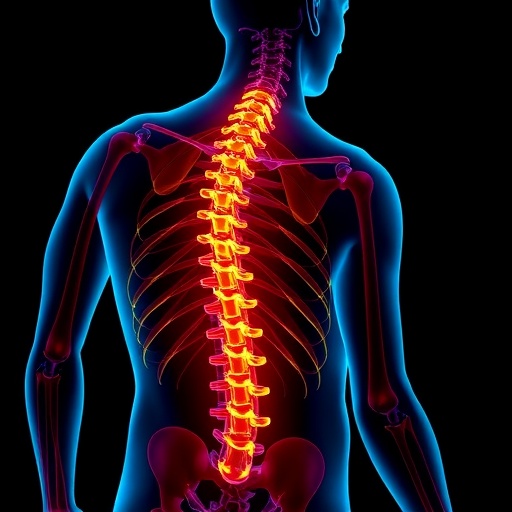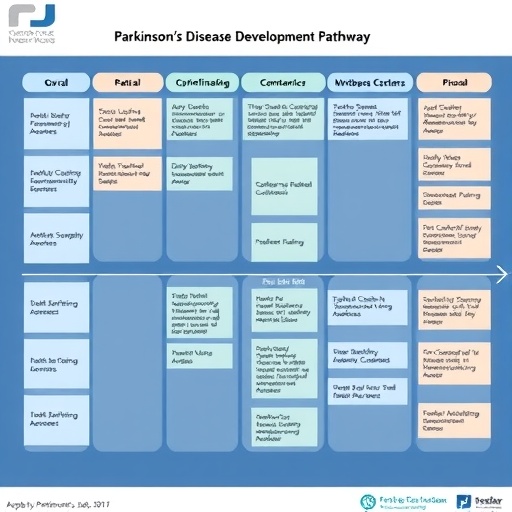A groundbreaking study from Case Western Reserve University has unveiled a remarkable neural mechanism within the spinal cord that could revolutionize treatments for individuals suffering from respiratory complications due to spinal cord injuries. Respiratory failure remains the leading cause of morbidity and mortality for the estimated 300,000 Americans living with such injuries. The newly characterized population of interneurons in the spinal cord offers hope by enhancing adaptive respiratory function during physiological stress, such as exercise or exposure to high altitudes.
For decades, neuroscientists recognized the brainstem’s critical role in setting the rhythm for breathing, but the specific pathways that amplify respiratory motor output remained elusive. This pioneering research, led by Polyxeni Philippidou, associate professor of neuroscience at Case Western Reserve University, illuminates the crucial role of a subset of cholinergic interneurons in modulating the respiratory network’s adaptability. These interneurons appear to act as a physiological buffer, enabling the body to adjust ventilation in response to elevated carbon dioxide (CO2) levels and other challenges.
CO2 is a metabolic byproduct produced continuously as cells metabolize nutrients to generate energy. Under normal circumstances, red blood cells transport CO2 from body tissues to the lungs, where it is exhaled. However, an accumulation of CO2 in the blood—a condition known as hypercapnia—can impair the body’s ability to breathe, often leading to respiratory distress or failure. The team’s findings, recently published in Cell Reports, reveal that inhibiting these spinal interneurons severely compromises the breathing response to hypercapnia in genetically modified mouse models, underscoring their essential contribution to respiratory homeostasis.
.adsslot_r8CTNDQdft{width:728px !important;height:90px !important;}
@media(max-width:1199px){ .adsslot_r8CTNDQdft{width:468px !important;height:60px !important;}
}
@media(max-width:767px){ .adsslot_r8CTNDQdft{width:320px !important;height:50px !important;}
}
ADVERTISEMENT
The researchers employed state-of-the-art genetic, electrophysiological, and imaging techniques to map the identity and connections of this interneuron subtype. Using targeted genetic manipulation, they could delineate the precise role of these neurons in fine-tuning the output of respiratory motor neurons located in the spinal cord. By combining neuron electrical activity recordings with high-resolution microscopy, the team elucidated the specialized architecture and dynamic function of these spinal circuits, which integrate brainstem inputs with motor outputs controlling diaphragm and accessory respiratory muscles.
What sets this discovery apart is the potential translational avenue it opens for treating respiratory insufficiency in patients with neurodegenerative disorders such as amyotrophic lateral sclerosis (ALS) and Alzheimer’s disease, in addition to traumatic spinal cord injury. Given that respiratory failure is a primary cause of death in these populations, strategies aimed at enhancing or restoring the function of these interneurons could offer a novel therapeutic foothold. Current treatments are largely supportive, relying on mechanical ventilation or respiratory stimulants, with limited success in reversing neural deficits.
This research continues a longstanding legacy at Case Western Reserve University’s Department of Neurosciences, which has been at the forefront of motor circuit and spinal cord injury research for more than three decades. The work builds on foundational studies by the late Jerry Silver, a renowned neuroscientist whose investigations into spinal cord regeneration and motor system repair laid critical groundwork. Silver’s contributions earned him the Christopher Reeve-Joan Irvine Research Medal, honoring his pioneering role in spinal cord injury treatment advancement.
Furthermore, the late Lynn Landmesser, a pioneering neuroscientist and former department chair, made seminal contributions to understanding motor circuit development. Her work helped shape the Cleveland Brain Health Initiative, underscoring the department’s commitment to integrative neuroscience research that transcends traditional disciplinary boundaries. These visionary academic leaders established a robust platform from which translational spinal cord research could thrive, culminating in discoveries like the one by the Philippidou group.
In light of these findings, the team advocates for continued exploration into the therapeutic potential of spinal interneurons across diverse models of respiratory decline. Future research aims to evaluate whether modulation of this cholinergic pathway can mitigate ventilatory impairments characteristic of progressive neurodegenerative conditions. If successful, such therapies could dramatically improve quality of life and survival rates for affected individuals globally.
Additionally, these insights deepen our fundamental understanding of how motor circuits adapt to environmental and physiological challenges. The spinal cord is conventionally viewed as a passive conduit for motor signals; however, this study highlights its active computational role in respiratory control. This paradigm shift could inspire new lines of inquiry into spinal cord plasticity and its broader implications for neural repair and regeneration.
In summary, the identification of a cholinergic spinal pathway crucial for adaptive control of breathing represents a major advancement with profound clinical relevance. It underscores the spinal cord’s complex contribution to vital functions and opens new avenues for targeted treatments of respiratory dysfunction in spinal cord injury and degenerative diseases. This work exemplifies the transformative potential of integrating cutting-edge neuroscience with clinical imperatives.
Subject of Research: Cells
Article Title: A cholinergic spinal pathway for the adaptive control of breathing
News Publication Date: 26-Aug-2025
Web References:
Christopher & Dana Reeve Foundation statistics on paralysis: https://www.christopherreeve.org/todays-care/paralysis-help-overview/stats-about-paralysis/
Case Western Reserve University School of Medicine: https://case.edu/medicine/
Cell Reports publication: https://www.cell.com/cell-reports/fulltext/S2211-1247(25)00849-6
References:
Philippidou, P., et al. (2025). A cholinergic spinal pathway for the adaptive control of breathing. Cell Reports, DOI: 10.1016/j.celrep.2025.116078
Image Credits:
Credit: Case Western Reserve University
Keywords: Nerve injuries, Respiratory control, Spinal cord interneurons, Spinal cord injury, Cholingergic neurons, Neurodegeneration, ALS, Breathing adaptation
Tags: adaptive respiratory function researchCase Western Reserve University studycholinergic interneurons and breathingCO2 levels and respiratory adaptationenhancing breathing after spinal cord damageimproving ventilation in high altitudemorbidity and mortality in spinal cord injuriesneural mechanisms for respiratory functionneuroscientific breakthroughs in breathing recoveryPolyxeni Philippidou neuroscience researchrespiratory complications in spinal cord injuriesspinal cord injury treatment innovations





